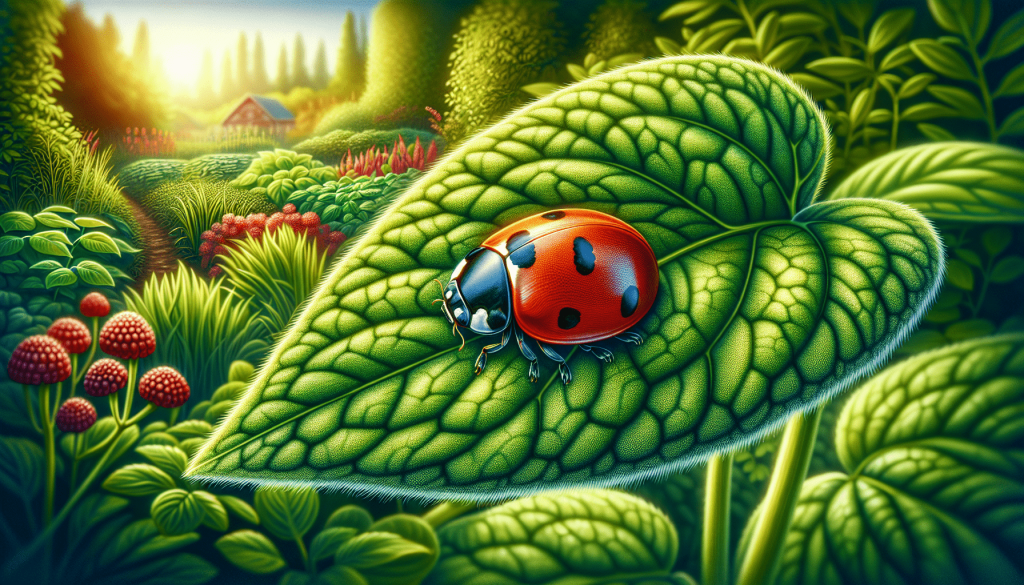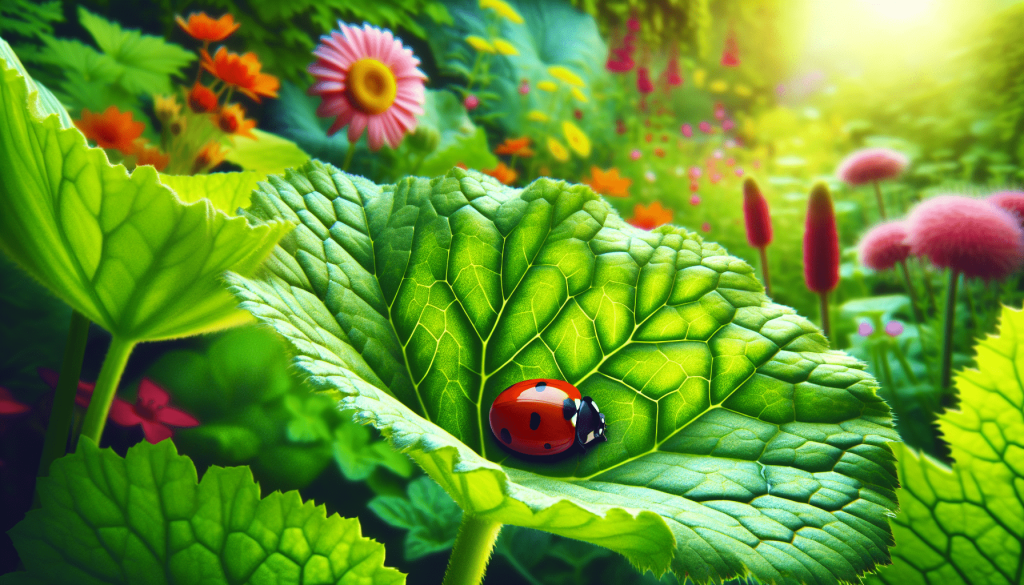This post may contain affiliate links. As an Amazon Associate, we may earn commissions from qualifying purchases.
Imagine your garden as a thriving, self-sustaining ecosystem, where beneficial insects work tirelessly to keep pests in check. In the article “How Do Beneficial Insects Contribute To Pest Control In The Garden, And What Practices Can Attract And Support These Beneficial Species?” you’ll discover how these tiny garden allies, such as ladybugs, predatory beetles, and parasitic wasps, play a crucial role in natural pest management. Not only will you learn about their valuable contributions, but you’ll also receive practical tips on creating a welcoming environment for these insects, from planting pollen-rich flowers to minimizing pesticide use. Embrace these eco-friendly practices, and watch your garden flourish while nature takes its course. Have you ever wondered how to leverage nature’s own workforce to maintain a healthy and thriving garden? Beneficial insects are your tiny allies in the garden, silently working to keep pests at bay while ensuring your plants reach their maximum potential. They play a crucial role by naturally controlling the population of harmful pests, reducing the need for chemical pesticides. Let’s dive into how these beneficial insects contribute to pest control and explore some practices you can adopt to attract and support these indispensable garden helpers.
Understanding Beneficial Insects
Before diving into the nuts and bolts of pest control, it’s important to understand what beneficial insects are and what roles they serve in the garden ecosystem. Beneficial insects are those that provide various advantages, such as pollination and pest control, promoting a balanced and healthy garden.
Types of Beneficial Insects
Some beneficial insects act as predators, feeding on harmful pests, while others might serve as parasitoids or pollinators. Here’s a glimpse into the different types:
- Predators: These insects directly consume pests. Examples include ladybugs, lacewings, and predatory beetles.
- Parasitoids: These insects lay their eggs on or in pests. When the eggs hatch, the larvae consume the host. Examples include certain types of wasps.
- Pollinators: While not directly involved in pest control, pollinators like bees contribute to garden health by enhancing plant reproduction.
How Beneficial Insects Contribute to Pest Control
Granted, these minuscule friends might seem insignificant at first, but their contributions can be monumental. Let’s break down their roles more concretely:
Predators: Nature’s Pest Exterminators
Predatory insects are essentially the lions and tigers of the insect world, engaging in the direct consumption of garden pests. For instance:
- Ladybugs: These tiny beetles are voracious when it comes to aphids, consuming up to 50 a day.
- Lacewings: Often called “aphid lions,” lacewings can wipe out aphid populations effectively.
- Praying Mantises: Not picky eaters, they’ll consume anything they catch, including beetles, caterpillars, and even other beneficial insects.
| Insect | Preys Upon | Extra Benefits |
|---|---|---|
| Ladybugs | Aphids, mites, scale insects | Rapid reproduction and long lifespan |
| Lacewings | Aphids, caterpillar eggs, small beetles | Easy to attract and long-lasting impact |
| Praying Mantis | Wide variety including beetles and caterpillars | Versatile and effective control |
Parasitoids: Silent Yet Deadly
Parasitoids may be smaller in size compared to predators but pack a significant punch. While they often go unnoticed in your garden, their influence is undeniable:
- Parasitic Wasps: These wasps lay eggs inside or on the bodies of their hosts, such as caterpillars and aphids, leading to the eventual demise of the host.
- Tachinid Flies: Similar to parasitic wasps, these flies infest caterpillars and beetles, controlling populations from within.
| Insect | Hosts/Prey | Extra Benefits |
|---|---|---|
| Parasitic Wasps | Aphids, caterpillars, whiteflies | Minimal harm to non-target species |
| Tachinid Flies | Caterpillars, beetles | Enhances long-term pest control |
Pollinators: Enhancing Garden Health
Pollination may not directly control pests but is critical for garden success because it ensures plant reproduction, leading to a more resilient botanical environment. Common pollinators include:
- Bees: Bees are among the most effective at pollination, ensuring a bountiful harvest.
- Butterflies: Besides being beautiful, butterflies contribute significantly to the pollination of various plants.

Practices to Attract and Support Beneficial Insects
Now that you understand their importance, let’s explore how you can make your garden a welcoming habitat for these beneficial insects.
Creating Habitats
Providing the right habitat is the initial step to attracting beneficial insects to your garden.
Planting Diverse Vegetation
A garden bursting with diverse plant species can offer different resources throughout the year:
- Flowering Plants: Provide nectar and pollen for predatory insects and pollinators.
- Host Plants: Essential for the life cycles of parasitoid insects.
| Plant Type | Beneficial Insects Attracted | Suitable Examples |
|---|---|---|
| Flowering Plants | Predators, pollinators | Marigolds, daisies, sunflowers |
| Host Plants | Parasitoids | Dill, fennel, parsley |
Offering Shelter
Insects need places to hide and breed. Maintaining a natural and somewhat wild corner in your garden can provide necessary quarters:
- Rock Piles and Logs: Sheltered spots for insects like beetles and spiders.
- Leaf Litter and Mulch: Provides cool, damp conditions preferred by many beneficial insects.
Water Sources
Insects, just like other animals, need water:
- Bird Baths and Small Ponds: These can double up to cater to insects and birds.
- Shallow Water Sources: Placing shallow dishes with water can make them insect-friendly.
| Resource Type | Beneficial Insects Attracted | Additional Benefits |
|---|---|---|
| Rock Piles and Logs | Beetles, spiders | Enhances overall biodiversity |
| Bird Baths | Variety | Supports other garden species |
Limiting Pesticide Use
Limiting or completely avoiding the use of chemical pesticides is important in creating a beneficial insect-friendly environment:
Natural Alternatives
Opt for natural pest control methods as opposed to chemical ones:
- Neem Oil: Effective against various pests while being less harmful to beneficial insects.
- Soap Sprays: Targets soft-bodied insects like aphids without leaving long-lasting residues.
Encouraging Native Plants
Native plants are better adapted to the local environment and can offer specific resources needed by regional beneficial insects.
- Resilience: Native plants often require fewer inputs like water and fertilizers, benefitting the entire garden ecosystem.
- Specialized Relationships: Many beneficial insects have specialized relationships with native plants, improving their presence and efficiency.
| Plant Origin | Benefits to Beneficial Insects | Example Plant Species |
|---|---|---|
| Native Plants | Specialized resources | Milkweed, coneflower |
| Non-native Plants | General resources | Lavender, rosemary |
Hands-on Practices to Boost Beneficial Insect Population
It’s great to know what kind of environment supports beneficial insects, but let’s look at actionable steps you can take.
Companion Planting
Companion planting is an age-old technique that involves planting certain plants together to boost each other’s growth and deter pests.
| Companion Plant | Main Plant Benefitted | Pests Deterred/Attracted Beneficial Insects |
|---|---|---|
| Marigolds | Tomatoes | Nematodes/Aphid Predators |
| Basil | Peppers | Aphids/Bee Attraction |
Intercropping
Different from companion planting, intercropping involves planting different crops in close proximity:
- Biodiversity Boost: Encourages a more diverse range of beneficial insects.
- Resource Optimization: Different plants utilize garden resources more efficiently.
Providing Artificial Shelters
Sometimes nature can use a little nudge:
- Insect Hotels: These structures can house various insects like solitary bees.
- Nest Boxes: Beneficial for predatory birds that can also help control pest populations.

Integrating Beneficial Insects: Practical Applications
Learning about beneficial insects and their habitats is one thing, but how do you practically integrate them into your garden?
Introducing Purchased Beneficial Insects
Companies offer beneficial insects for direct release into your garden:
- Ladybugs: Available in bulk and can be scattered in pest-affected areas.
- Predatory Nematodes: Useful for soil-dwelling pests and can be mixed into the garden soil.
Monitoring Your Garden
Continuously observe your garden to gauge the effectiveness of your efforts:
- Regular Inspections: Check plants regularly for pest damage and beneficial insect activity.
- Record Keeping: Maintain a journal noting the presence of pests and beneficial insects to identify patterns.
Seasonal Adjustments
Different seasons will affect both pests and beneficial insects:
- Spring and Summer: Focus on flowering plants to attract pollinators and predatory insects.
- Fall and Winter: Maintain a habitat with leaf litter and bark to provide protection during colder months.
Conclusion
Creating a garden teeming with beneficial insects is a rewarding endeavor that requires a blend of knowledge, effort, and some patience. By understanding the types of beneficial insects, recognizing their contributions to pest control, and adopting practices that attract and support them, you can transform your garden into a flourishing, self-sustaining ecosystem. It’s an investment in time and resources that yields substantial returns, proving that sometimes the best pest control comes in the form of tiny, diligent allies. Embrace these practices, and soon, you’ll find yourself marveling at the balance and harmony in your beautifully buzzing garden.








